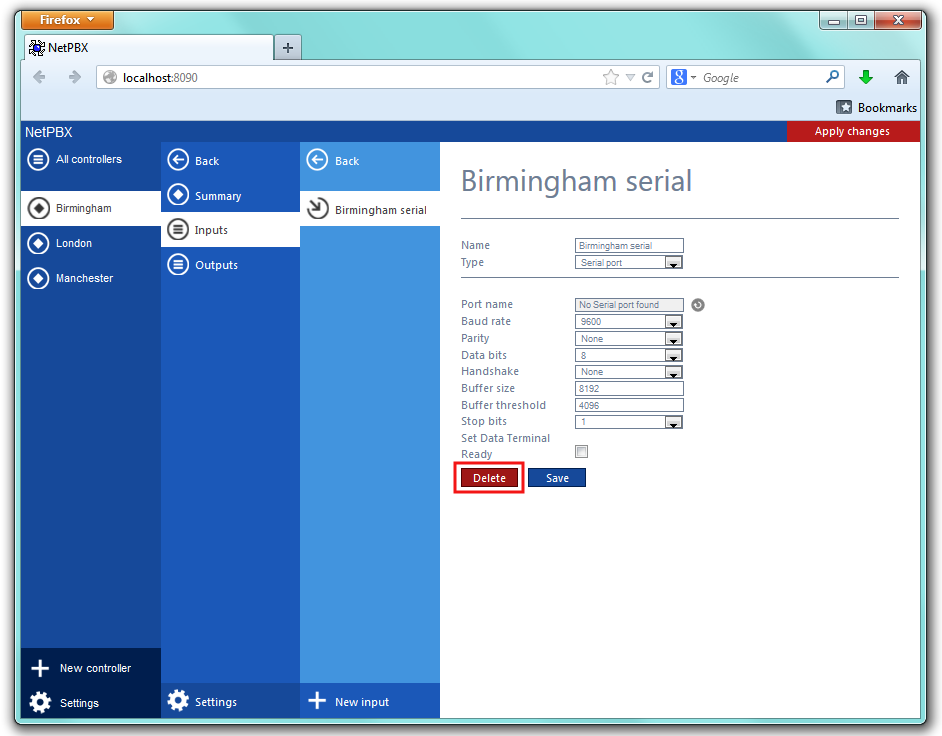An Input is the system object that connects to a data source, such as PBXs, routers and other telecom signalling equipment, and collects the call logging data.
Adding an input
To add a new data input, click on the button from either the Summary or the Inputs screen, as shown below:
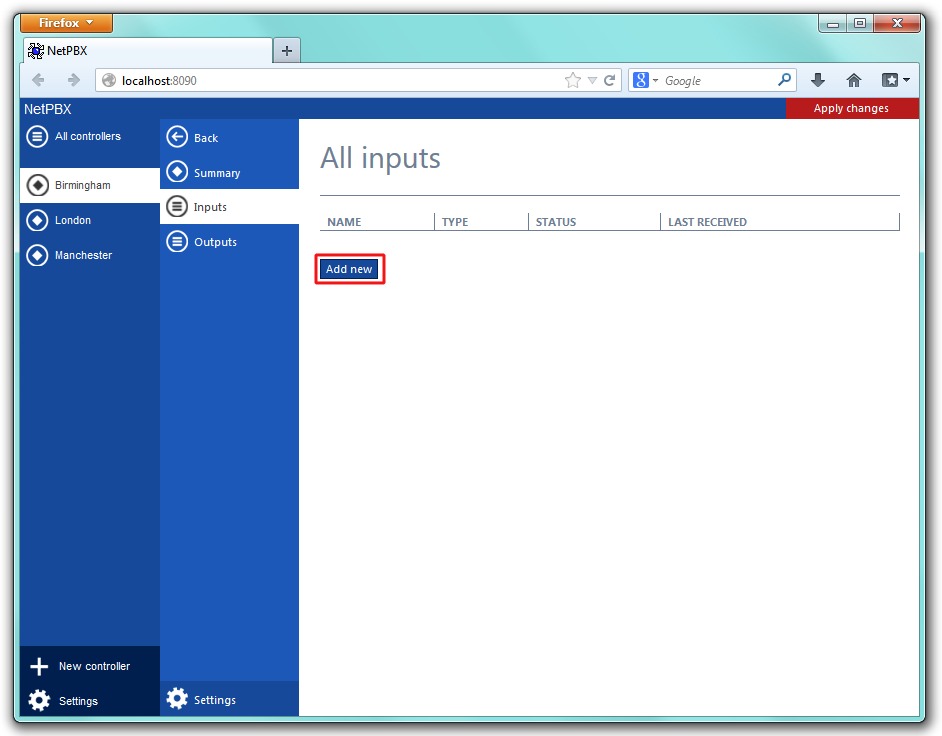
A new window will open, allowing you to name the input. Enter a name and click on the button, as shown below:
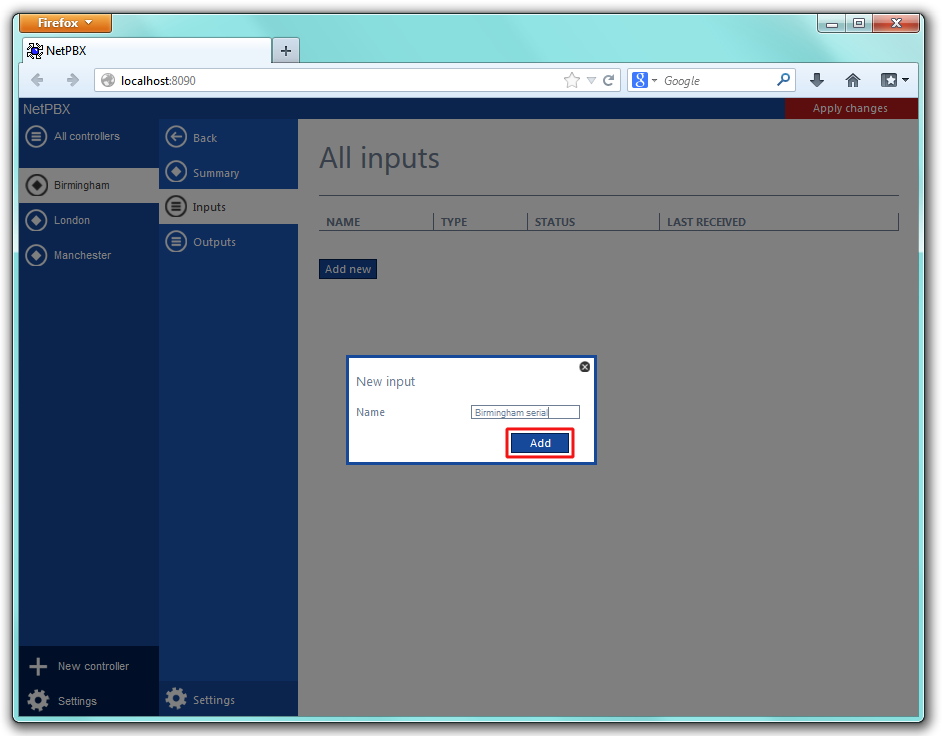
The data input configuration screen will be displayed. To configure these settings, refer to the Configuring an input section.
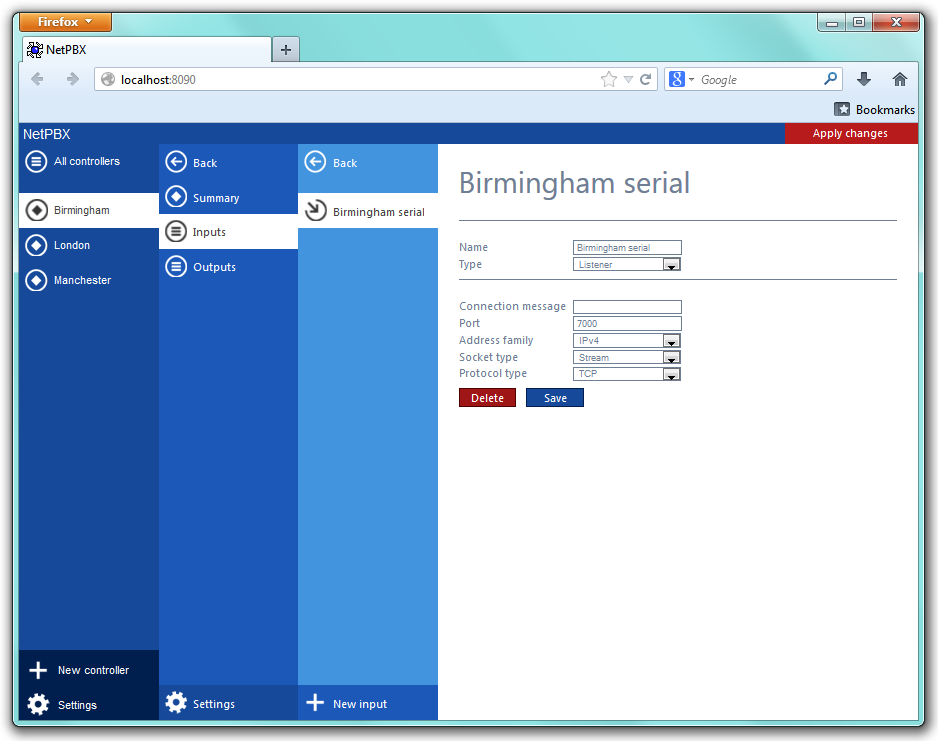
Configuring an input
To configure a data input, select it from the All inputs list, as shown below:
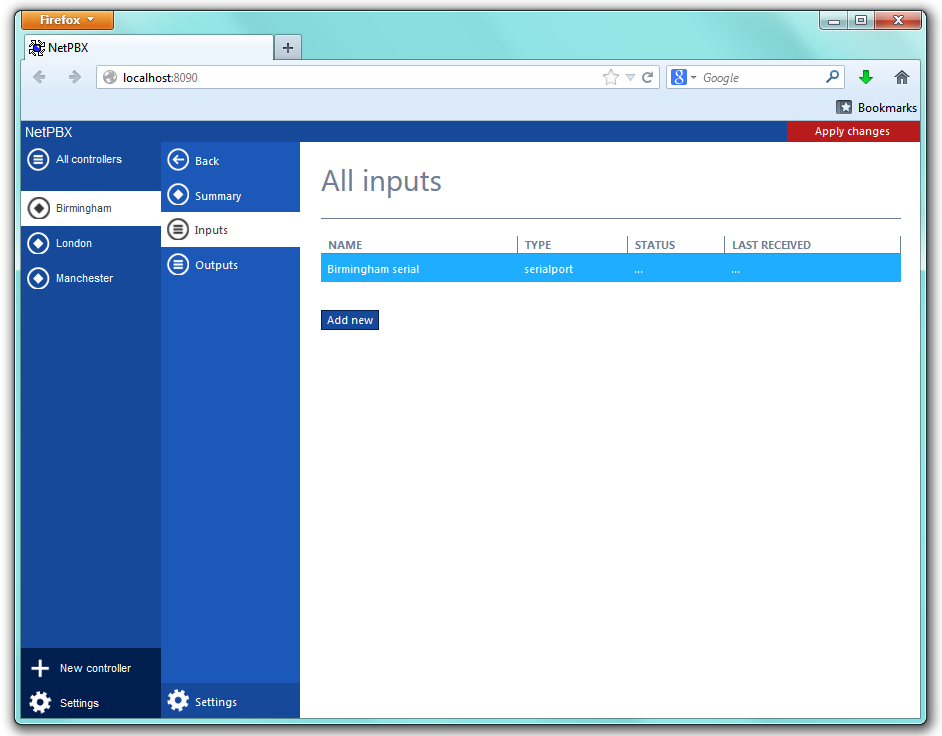
A new window will open on the right-hand side panel, allowing you to configure the settings of your data input:
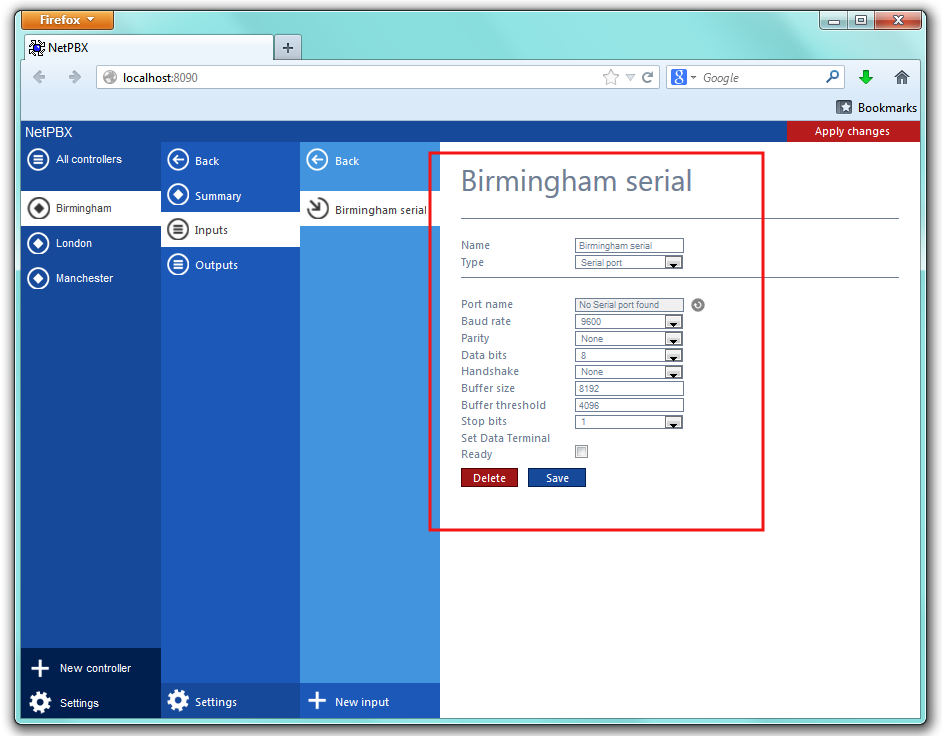
Name
The Name field allows you to view or edit the name of the current data input. To rename, overtype the current entry.
Type
The Type field allows you to specify the connection method by which the data should be collected from the phone system. The following methods are supported:
Input types
Listener
This method creates a socket and binds it to a specific port, accepting any data received on the connection without challenge.

| Field | Description |
|---|---|
Connection message | An optional greeting message which is sent to any connecting socket. This message can include one or more of the following variables:
|
| Port | The port that the listener should bind to |
| Address family | The address family of the socket |
| Socket type | The type of data flow the socket expects |
| Protocol type | The type of protocol the listener will use |
Serial port
This method allows the connection of a serial (RS-232) device.
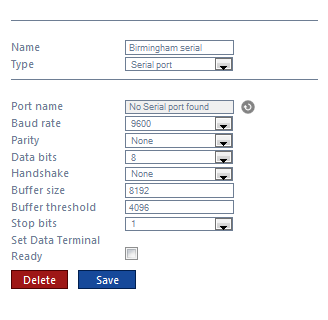
| Field | Description |
|---|---|
| Port name | The name of the serial port device, e.g. COM 1, COM 2 |
| Baud rate | The serial port's speed |
Parity | The parity check regime
|
| Data bits | The number of data bits, between 5 and 8 |
Handshake | The type of handshake the serial port requires:
|
| Buffer size | The size of the serial port's data buffer |
| Buffer threshold | The size that the buffer must first reach before being empty |
| Stop bits | The number of stop bits used |
Client socket
This method creates a TCP socket and connects to a remote host. When the connection is established, optionally, a password can be sent; thereafter, any data received is accepted.
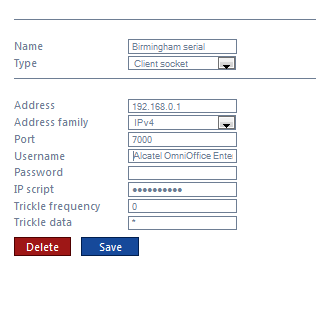
| Field | Description |
|---|---|
| Address | The IP address or hostname to which the socket should connect |
| Address family | The address family of the socket |
| Port | The port that the listener should bind to |
| Username | |
| Password | An optional password which is sent upon successful connection |
| IP script | |
| Trickle frequency | |
| Trickle data |
Pipe server
This method opens a global named pipe and accepts any data that is sent to it.
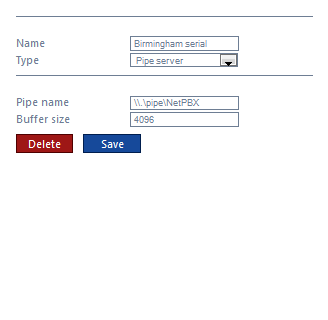
| Field | Description |
|---|---|
| Pipe name | The name of the pipe that is created |
| Buffer size | The size of the buffer, in bytes, that is allocated to the pipe |
BCM SSH
This method registers a connection with the Nortel CDRClient.dll library and receives data-callbacks whenever the PBX produces data.
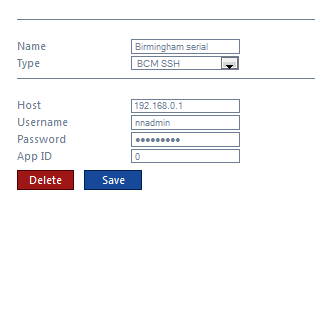
| Field | Description |
|---|---|
| Host | The IP address or hostname of the BCM PBX |
| Username | The username required to access PBX CDR events |
| Password | The password required to access PBX CDR events |
| App ID |
XML file
This method monitors an XML file for new nodes. Any new nodes are extracted and presented into a new XML document. An XPath query is used to specify which nodes to monitor. A unique element is required to track which nodes are new. Default properties are designed to work with the "ticketcollector.xml" file produces by an Alcatel OmniPCX Enterprise PBX.

| Field | Description |
|---|---|
| Location | The full filename of the XML file to be monitored. The {app} variable can be used to specify the program data location of the running service |
| X-Path query | The XPath query to use when testing for new nodes |
| Checksum node | The unique node/element to use to track which nodes have been added since the last check |
| Outer element | The name of the outer XML element to be used to contain any new nodes when the new XML document is created for output |
| Check interval | |
| Delay | A value, in milliseconds, that specifies the artificial delay that is waited when a change in the source XML file is discovered. If the file were to be accessed immediately upon a change, i.e. without such a delay, the operating system would most likely not allow access to the file so soon, causing a sharing violation |
File reader
This method opens a connection to an actual file.
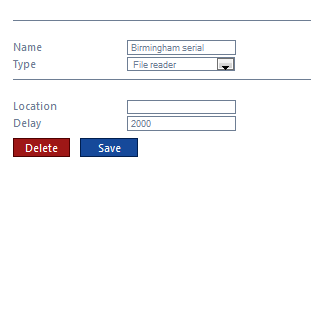
| Field | Description |
|---|---|
| Location | The path of the folder where the file is located |
BCM DCOM
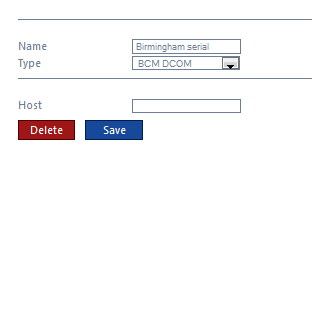
| Field | Description |
|---|---|
| Host | The IP address or hostname of the BCM PBX |
Deleting an input
To delete a data input, select it from the All inputs list, as shown below:

A new window will open on the right-hand side panel. Click on the button to remove the input from the system, as shown below:
